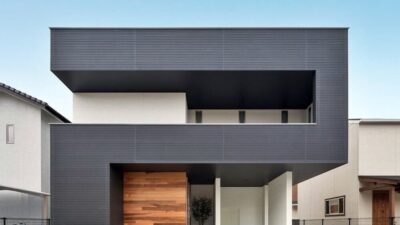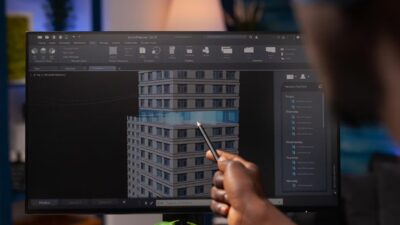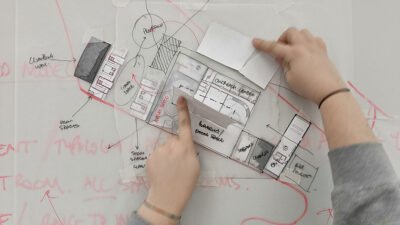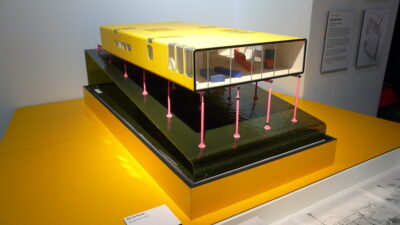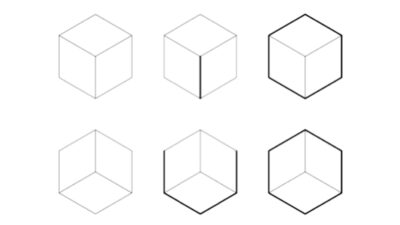An outstanding portfolio requires attention to several key elements, and understanding these can enhance the ability to attract more clients. This discussion features 15 exceptional examples and includes a quick guide to assist in crafting such portfolios.
Unlike a resume that impresses a recruitment team, a portfolio is crucial for making a lasting impression on clients. Portfolios demonstrate design handling skills and suitability for specific positions based on style and approach. In light of this, a search was conducted for the best Architecture Portfolio Examples, focusing on work quality. Selection criteria included detail orientation, design quality, creativity, presentation techniques, and eye-catching styles. This presentation aims to showcase the best works currently available on the Internet, offering inspiration. Additionally, a 4-step guide is provided to design a winning portfolio. Let’s explore these aspects without further delay.
Understanding the key steps to create an outstanding architecture portfolio provides a strong foundation, which can be further enhanced by familiarizing oneself with user-friendly architecture software designed for beginners.
2023’s Outstanding Architecture Portfolio Showcase
1. Gabriel Nunes
The primary reason for selecting this portfolio is its captivating color patterns and the sense of calmness it imparts upon viewing. It features well-explained renders and images, enriched with detailed storytelling. The inclusion of rough sketches that tie into the main narrative is particularly engaging. Additionally, the portfolio’s theme and its engrossing, balanced presentation stand out.
2. Rinnu Elizabeth Reju
Rinnu Elizabeth Reju’s portfolio is a masterclass in minimalism, showcasing a refined and understated design ethos that captivates the viewer. The theme of minimalism is not just a stylistic choice but a narrative tool, using enlarged details of architectural structures to draw the viewer into the finer aspects of the design. This meticulous attention to detail extends to the storytelling component of the portfolio, which skillfully weaves historical context into the presentation of each project. This narrative approach adds depth and dimension to the work, inviting the viewer to explore not just the structures themselves but their place in a broader historical and cultural tapestry. Each page of the portfolio is thoughtfully composed, featuring scales, selections, diagrams, and elevations that are both informative and aesthetically pleasing. The overall effect is a portfolio that is as educational as it is beautiful, making it a standout example of architectural presentation.
3. Leonardo Ribeiro
Leonardo Ribeiro’s portfolio is a testament to the power of simplicity in design. It stands out in the realm of architecture portfolios for its uncluttered and clear approach, offering a refreshing contrast to more complex designs. This portfolio begins with straightforward sketches of architectural structures, laying a foundation that is both accessible and informative. These initial sketches are then complemented by detailed renders, providing a deeper understanding of the final design and construction. The integration of images in the portfolio is executed with precision, each one carefully chosen to enhance the viewer’s understanding of the project. This meticulous curation extends to the overall presentation, which is characterized by its clarity and coherence.
4. Tatiane Keiko
This portfolio distinguishes itself with a unique timeline approach, setting it apart from others. Its efficient selection of images and sketches, combined with renderings, creates a visually appealing presentation. Each structure within the portfolio is meticulously detailed, contributing to its potential as a standout portfolio.
5. Mustafa Gelgec
This portfolio stands out as a personal favorite among the examples due to its strikingly conventional yet attention-grabbing information. The storytelling skillfully balances the subject matter with clear indications of the underlying issues. A hallmark of this portfolio is the fusion of extensive visuals with comprehensive, detailed text, making it particularly special.
6. Natalia Khlopenkova
Creating a strong identity through simplicity, this online portfolio employs a minimalist color palette to great effect. It offers detailed explanations of the inspirations behind the work and reveals the final renders in an engaging manner. Although the portfolio contains minimal text, the way the sketches and images are presented and explained makes it highly accessible and effective.
7. John Varghese
This portfolio showcases how far one can go with playful and bold motions and graphics. It exemplifies playful attention to detail, where the use of bold, soft, and calming colors adds a sense of grace and joy. The incorporation of videos and motion graphics in this portfolio is an innovative approach, pushing the boundaries of creativity.
8. Ulker Zeynep Colak
For those who appreciate the art of comic books, this portfolio will resonate strongly. It’s a testament to the inborn creativity of architects who favor such styles. The portfolio features colorful layouts where sketches are seamlessly integrated with renders, creating a visually stunning display. The consistent use of images, playful texts, and bold colors throughout the portfolio makes it especially captivating and showcases a unique artistic approach.
9. Vinayak Verma
This portfolio is an exemplary source of inspiration for aspiring product designers. Its striking dark theme provides a dramatic contrast that highlights the beauty of the featured products. The combination of inspirational sketches and final renders is impressively executed. Additionally, the portfolio’s presentation skills are noteworthy, demonstrating a sophisticated and effective approach to showcasing design work.

10. Keerthi Jeeturthi
Keerthi’s portfolio stands out due to its nostalgic storytelling approach, making it a prime example of high-class portfolio design. There are several notable aspects, such as the cohesive blue theme, meticulous attention to detail, and the underlying inspiration that drives the work. The incorporation of various themes within a single portfolio is a key feature, demonstrating versatility and a broad range of design skills. This portfolio not only showcases Keerthi’s artistic capabilities but also serves as a source of inspiration for others in the field.
11. Daniel Caires
This portfolio instantly captivates with its oddly satisfying blend of neutral and warm colors, creating an immediate impact. Its minimalist design aligns with what many architects admire, offering a refined and understated aesthetic. The portfolio skillfully uses images to tell a complete story, eliminating the need for text. This approach allows for an immersive visual experience. For those who appreciate a serene, white color scheme and seek inspiration in minimalist design, this portfolio is an ideal reference point.
12. Anton Panchenko
Anton’s portfolio exemplifies the art of making wise decisions in showcasing architectural work. It features a well-thought-out color coordination, a deeply analyzed index, an in-depth introduction, and comprehensive project examinations. This portfolio stands out for its unique approach and could inspire those looking to create something distinctive. Anton’s work demonstrates how a carefully curated portfolio can make a significant impact and lead the way in showcasing architectural excellence.
13. Victoria Bondareva
The portfolio of Victoria Bondareva is remarkable for its extraordinary color scheme, which immediately captures attention. It includes a detailed index, an extensive preface with a long introduction, and thorough synopses of each project. This architectural portfolio is placed at the forefront due to its comprehensive and informative approach. Each section is dedicated to telling the story of a project, complete with in-depth structural details, imagery, and texts. For those seeking inspiration for creating a knowledge-rich and deeply informative portfolio, this work serves as an exemplary model.
14. Luliia Tambovtseva
The classic black and white theme is timelessly effective, whether applied to websites, projects, or portfolios. Luliia’s portfolio emphasizes this aesthetic, giving prominence to images while minimizing text. She effectively conveys her design choices visually, making this portfolio ideal for those who prefer less textual content. However, it’s noteworthy that an index, a critical element for any portfolio, is absent in this presentation. Those inspired by this style should consider including an index in their own portfolios for better organization and navigation.
15. Sai Raghav
Sai Raghav’s portfolio serves as an inspiration for thoughtful and well-coordinated design approaches. It underscores the importance of having a meaningful purpose behind architectural designs, aiming to solve real-world problems. The portfolio exemplifies clear thinking paired with minimalism, striking a balance between essential information, text, and visuals. This approach not only ensures clarity in presentation but also aligns with the principle that effective design is about problem-solving and simplicity. It’s a valuable reference for those seeking to create a portfolio that communicates effectively with a balanced use of text and imagery.
Creating a Winning Architecture Portfolio in 2023

Gaining insights from some of the best architecture portfolios online can shape ideas for your own. If clarity hasn’t emerged yet, the following steps will assist in organizing and presenting your work with both care and creativity.
But before delving into that, it’s worth considering the basis of this advice. With insights gathered from analyzing hundreds of successful and less successful architecture portfolios, and understanding the dos and don’ts experienced by a group of recent graduates, the information is distilled into four key steps. These steps highlight the aspects most noticed by interviewers or clients, ensuring a focused and effective approach to portfolio creation.
Emphasizing the Introduction
- Many architecture portfolios feature sophisticated titles and creative designs, yet often overlook the importance of an introduction. Including a brief introduction that outlines experience, education, and skills can significantly enhance the impact of a portfolio;
- This introduction not only establishes the portfolio’s identity but also enables clients or interviewers to quickly assess relevant information and appreciate the attention to detail.
Clarifying Portfolio Contents
- A well-organized architecture portfolio, like any informative book, should guide the reader through its contents;
- Utilizing a clear index helps clients or interviewers easily find what they need, aligning with their specific interests or requirements;
- Neglecting this element can create an impression of disorganization and may hinder the client’s ability to determine the portfolio’s suitability for their needs.
Enhancing Portfolios with Descriptive Renders
- Incorporating renders into an architecture portfolio showcases past projects effectively, but pairing these renders with descriptions elevates their impact;
- It’s important to remember that explanations need not be solely textual;
- Effective communication can be achieved through creatively designed, self-explanatory renders that are accessible even to those unfamiliar with technical jargon;
- Complementing these visuals with concise paragraphs can pique the interest of clients or interviewers, prompting them to delve deeper into your work and ask meaningful questions.
Leveraging Storytelling Techniques
- In today’s digital age, where social media dominates, physical portfolios capture attention when they offer a unique and engaging experience;
- One effective method is to incorporate storytelling, using real-life challenges or experiences related to the projects;
- This approach transforms the portfolio into a narrative journey, connecting the viewer with the work on a more personal and memorable level;
- By turning project details into stories, the portfolio becomes not just a showcase of skills but a compelling tale of architectural endeavors.
Conclusion
The exploration of top architecture portfolio examples reveals that they are a product of considerable effort and dedication. If feeling less confident in this area, focus on identifying personal interests and unique professional traits. Crafting an architecture portfolio around these elements ensures a strong and authentic start. Feedback and suggestions for additional content are always welcome to enhance and enrich the discussion further.
Frequently Asked Questions
An architecture portfolio is a professional collection that showcases work in the field of architecture. It effectively combines text and imagery to present a comprehensive record of an individual’s architectural projects and experiences.
A well-crafted architecture portfolio should include a striking cover, detailed work experience, and an organized index. It is also important to provide concise descriptions of past projects to give a clear overview of the individual’s professional journey.
There’s no strict rule regarding the length of an architecture portfolio. The key is to make it informative yet engaging, ensuring that it holds the reader’s attention without overwhelming them. For significant projects, consider creating a customized portfolio that smartly balances format, text, and imagery.
For designing an architecture portfolio, industry-standard software such as Adobe InDesign, Adobe Photoshop, and Adobe Illustrator are highly recommended. These tools offer versatility and professional capabilities for creating compelling portfolios.
It is generally advised to design architecture portfolios in landscape format. This orientation facilitates better layout planning for project images and sketches and is also a common industry standard.



